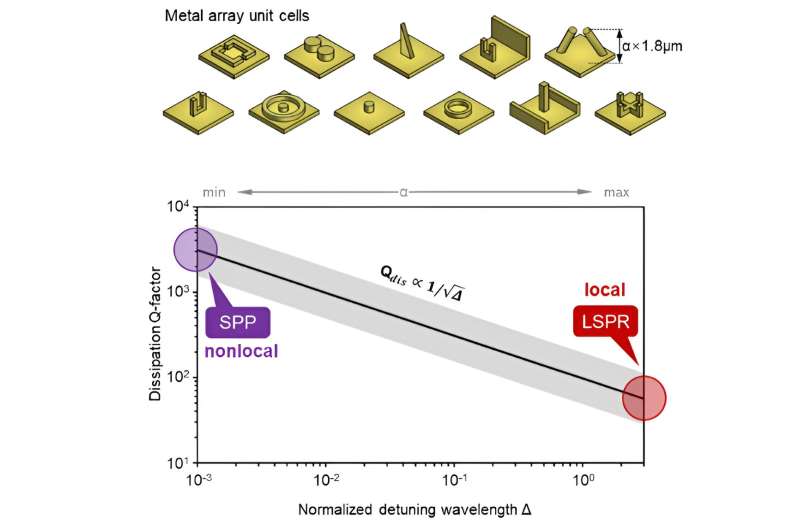Researchers at the City University of Hong Kong (CityUHK) have made a groundbreaking discovery that significantly reduces energy loss in metal nanostructures. By altering the geometric dimensions of these structures, they have unlocked their full potential, paving the way for the development of more powerful and efficient nanoscale optical devices. This discovery has the potential to revolutionize various fields, including sensing, imaging, and solar energy.

Bridging the Gap between LSPR and SPP
The research team, co-led by Professor Tsai Din-ping from CityUHK and Professor Yuri Kivshar from the Australian National University, has made a remarkable breakthrough in resolving the longstanding issue of energy loss in metal nanostructures.
Their discovery bridges the gap between localized surface plasmon resonances (LSPRs) and surface plasmon polaritons (SPPs), resulting in a two-order-of-magnitude improvement in resonance quality in metal arrays. This achievement was made possible by the team’s innovative thinking and a departure from conventional approaches, which had previously failed to effectively address this challenge.
The Inverse Square Root Law: A Universal Rule
The researchers have uncovered a new universal rule, the inverse square root law, which demonstrates how adjusting the dimensions of plasmonic nanostructures can significantly reduce energy loss. This discovery has opened up exciting possibilities for stronger light-matter interactions at the nanoscale, with the potential to revolutionize various fields.
By bridging the gap between high-loss localized surface plasmon resonances (LSPR) and low-loss surface plasmon polaritons (SPP), the team has unlocked the full potential of metal nanostructures, paving the way for the development of even more powerful and innovative optical devices.
Transforming the Future of Nanoscale Optics
This breakthrough discovery by the CityUHK research team has the potential to usher in a new era of technological advancement. With the ability to reduce energy loss in metal nanostructures, researchers are now poised to develop even more efficient and high-performance nanoscale optical devices.
The implications of this research extend beyond the scientific community, as it could lead to the development of groundbreaking technologies in fields such as sensing, imaging, and solar energy. By overcoming the longstanding challenge of energy loss, the researchers have opened up new frontiers in the realm of nanoscale optics, promising a future of enhanced light-matter interactions and unprecedented technological advancements.
